Integrating AI and Environmental Data: The Future of Worker Safety
In today’s fast-paced, labor-intensive industries, worker safety and productivity are critical. This blog explores how cutting-edge technologies like AI for worker safety and geospatial intelligence in factories can transform the way businesses monitor and protect their workforce, particularly in high-heat environments. By integrating real-time data and machine learning in workplace health, companies can dynamically predict fatigue, detect unsafe conditions, and optimize working conditions. Learn how advanced solutions like personalized fatigue models and environmental data integration for worker safety can reduce risks, boost productivity, and enhance overall worker well-being. Discover the future of workforce safety and how AI can help you build more innovative, safer operations.
SCIENTIFIC INSIGHTS INTO AI AND GEOSPATIAL TECHNOLOGIESTECH FOR PUBLIC HEALTH
Scott Pezanowski
10/24/20246 min read
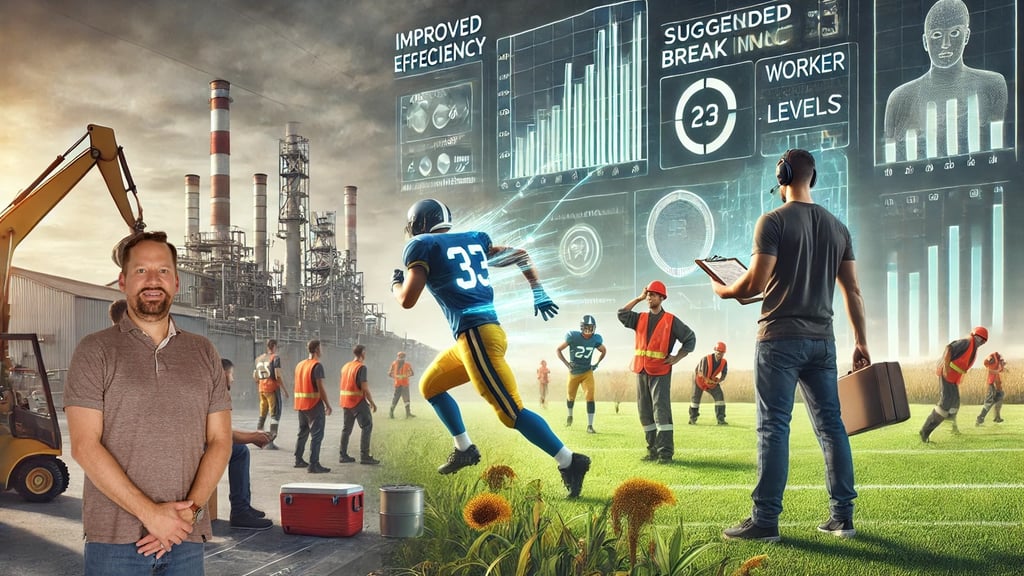

Imagine a sports coach during a high-stakes game, constantly monitoring players' energy levels, subbing out exhausted ones, and adjusting strategies based on real-time data. A perfect example is Germany's 2014 World Cup, where data science helped make game-changing decisions, like substituting Mario Götze, who scored the winning goal. What if businesses could apply these same principles using AI for worker safety? Imagine knowing exactly when an employee is hitting their fatigue limit and preventing accidents before they happen. This is the future we're stepping into, thanks to machine learning in workplace health and geospatial intelligence in factories.
Nakae, S., Ogiso, S., Mori, I., Miura, T., Haga, Y., Hatakeyama, S., Kimura, K., Sugi, T., Kimura, A., & Kurata, T. (2023). Geospatial intelligence system for evaluating the work environment and physical load of factory workers*. 2023 45th Annual International Conference of the IEEE Engineering in Medicine & Biology Society (EMBC), 1–5. https://doi.org/10.1109/EMBC40787.2023.10340890
In a recent study conducted at a DENSO Corporation factory, Japanese researchers explored how heat and physical activity affect worker safety and productivity, particularly in high-temperature environments. Using Bluetooth Low Energy (BLE) beacons and environmental data integration for worker safety, they tracked workers' locations and monitored conditions like temperature and humidity. This data helped assess workers' physical stress levels and could revolutionize how we approach real-time worker fatigue monitoring in labor-intensive industries, especially those operating in extreme climates.
The Power of Geospatial Intelligence
One of the study’s most significant findings is how outdated traditional temperature measurements are. Tracking each worker's location in real-time and combining it with environmental data integration for worker safety provided far more accurate insights into how heat impacts individual workers. The researchers used machine learning in workplace health, employing regression models to predict thermal comfort and decision tree models to pinpoint factors that contribute to fatigue.
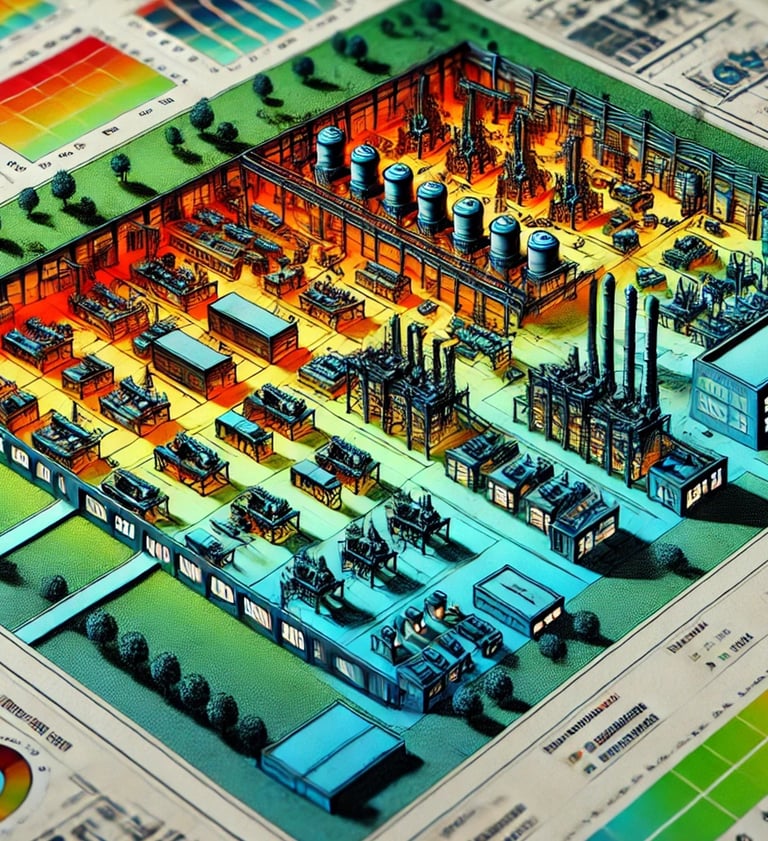

For instance, they discovered that day-shift workers felt significantly hotter than their night-shift colleagues due to external temperatures. This data isn’t just fascinating; it’s crucial for AI-powered workplace productivity solutions. Fatigue isn’t just an inconvenience—it’s a leading cause of workplace accidents, mistakes, and lost productivity. With real-time worker fatigue monitoring, businesses can proactively reduce risks and prevent costly errors or dangerous situations.
Advanced Machine Learning Extensions
As someone who has worked in AI for years, I know we’re only scratching the surface with this study. With machine learning in workplace health, we can take these findings to a whole new level, offering more precision, better insights, and even predictive capabilities. Here are some exciting extensions we can explore.
1. Personalized Fatigue Models
Using AI for worker safety, we can move away from a one-size-fits-all approach and develop personalized fatigue models for each worker. Think of it as Netflix recommendations, but focus on safety and productivity. Analyzing each employee’s fitness level, hydration habits, and specific tasks, we can predict when they’ll need a break or a more comfortable workspace. This level of precision, made possible by real-time worker fatigue monitoring, can help companies customize heat management strategies on the fly.
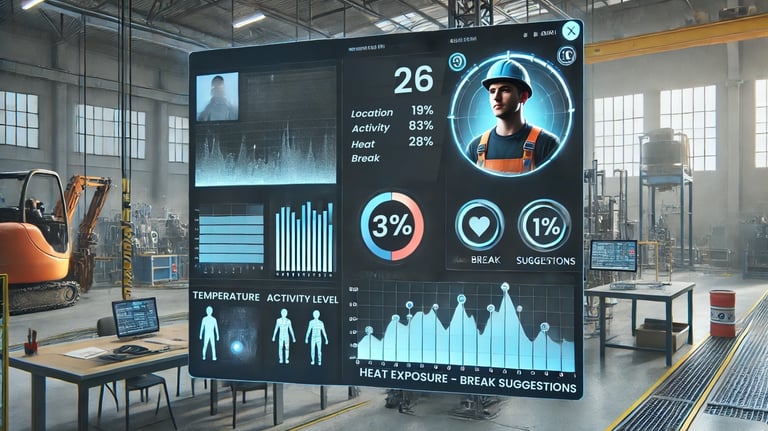

Imagine a dashboard for managers displaying personalized fatigue models that are dynamically updated with real-time data from sensors monitoring each worker’s body temperature, heart rate, and workload. These AI-powered workplace productivity solutions ensure that worker well-being and productivity are optimized simultaneously.
One of the most valuable applications of machine learning in workplace health is the ability to apply time-series forecasting to predict worker fatigue. Using models like LSTMs (Long Short-Term Memory) or ARIMA (AutoRegressive Integrated Moving Average), businesses can forecast when a worker will reach peak fatigue based on historical data such as temperature, workload, and activity levels. This enables proactive adjustments to shifts, workloads, or cooling systems long before fatigue becomes an issue.
2. Time-Series Forecasting for Fatigue and Workload
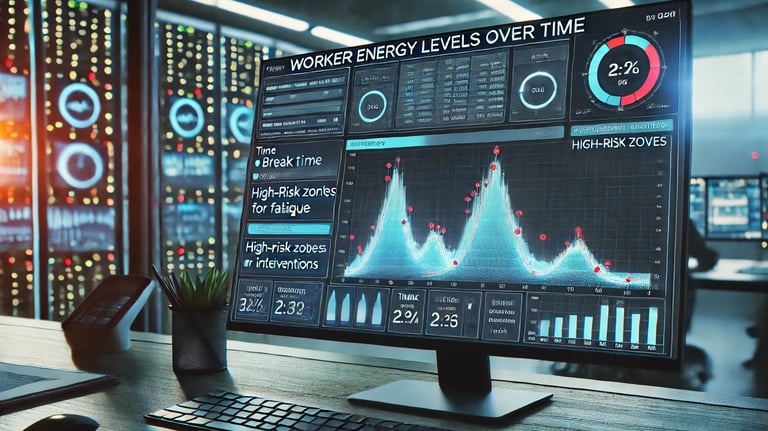

Picture a real-time dashboard powered by AI for worker safety that monitors current conditions and predicts future fatigue levels, allowing managers to make decisions based on accurate forecasts.
With machine learning in workplace health, anomaly detection becomes essential for identifying unsafe conditions before they escalate. Companies can flag these anomalies early by training unsupervised machine learning models to detect unusual patterns—like a sudden spike in temperature or a drop in a worker's activity—and take corrective action.
For example, an anomaly detection system could use autoencoders to automatically send alerts when abnormalities are detected in worker conditions, allowing supervisors to step in before problems arise.
3. Anomaly Detection for Unsafe Conditions
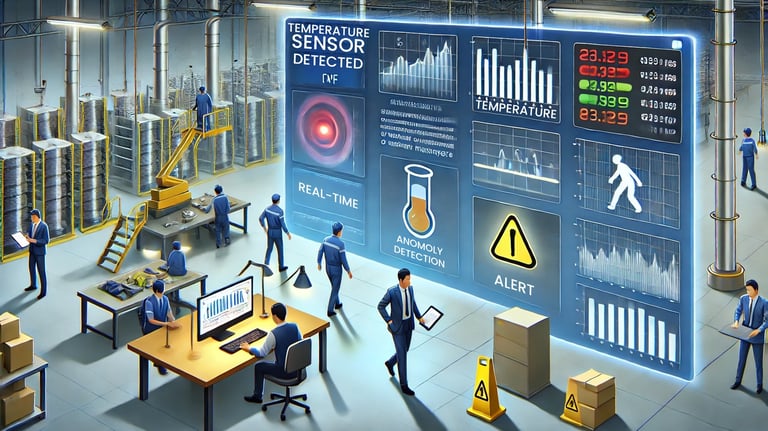

Imagine if an AI-powered workplace productivity solution could automatically adjust working conditions in real-time using reinforcement learning. This system would learn each worker's best ventilation, cooling, and break schedules, ensuring they remain safe and productive throughout their shifts. By continuously adjusting conditions based on real-time data, AI for worker safety becomes an active agent in maintaining optimal working environments.
In this setup, reinforcement learning would consider environmental data like temperature and humidity and individual worker data such as fatigue levels and dynamically adjust the workplace environment accordingly.
4. Dynamic Optimization Using Reinforcement Learning
Finally, environmental data integration for worker safety allows companies to expand their safety strategies by factoring in external elements such as weather forecasts, air quality levels, and even heatwaves. A multimodal deep learning model can predict how outdoor conditions impact indoor environments, allowing businesses to mitigate risks proactively, especially in hot climates like the Middle East.
5. Integration of External Environmental Data
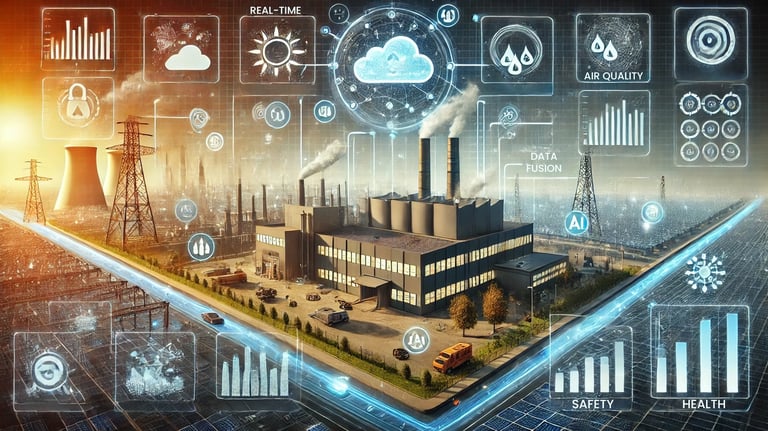

With geospatial intelligence in factories, workers are better protected, as managers can make real-time decisions based on internal and external data. For example, if a heatwave is predicted, cooling systems inside the factory could be adjusted before outdoor temperatures spike, safeguarding worker health and productivity.
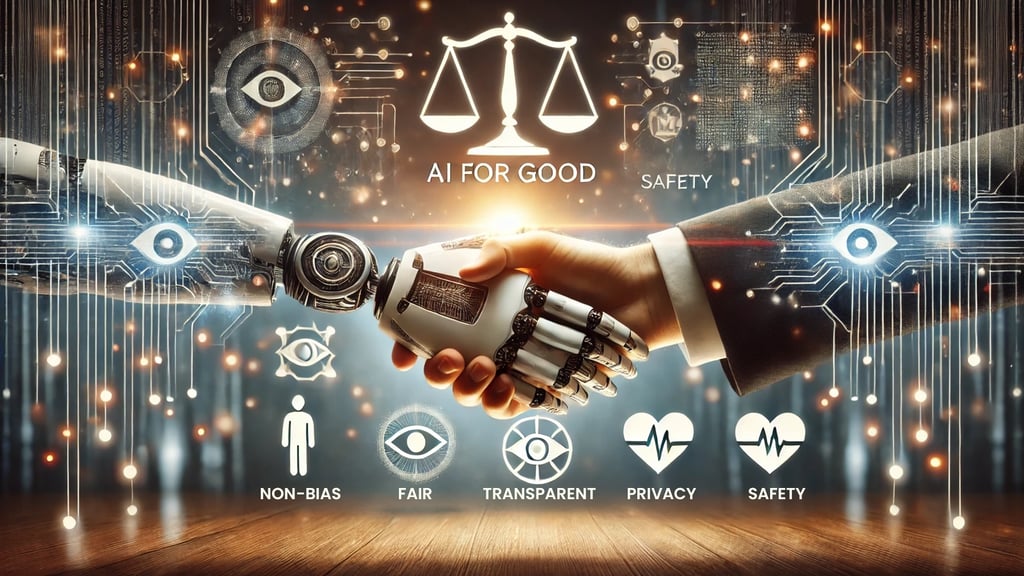

Addressing Privacy and Ethical Concerns
While AI-powered workplace productivity solutions offer immense benefits, they also introduce privacy concerns. Monitoring workers' health and activity so closely, including tracking fatigue and heat exposure, could lead to an invasion of privacy and a sense of constant surveillance. If not managed carefully, using AI for worker safety could erode trust, making workers feel more like monitored subjects rather than valued employees.
Transparency is critical to addressing these issues. Companies should communicate why this data is being collected and how it will be used. Implementing robust anonymization and security protocols ensures that personal data is protected. Additionally, focusing on safety and well-being, rather than micromanaging performance, can foster trust and create a more positive workplace environment.
How I can help
Over the past 20 years, I’ve used AI for worker safety and machine learning in workplace health to solve real-world problems across various industries. Whether predicting disease outbreaks in Africa with the World Health Organization or building systems that detect oil spills in the Arabian Gulf, I have always focused on creating AI-powered workplace productivity solutions that deliver actionable insights.
This DENSO factory study compellingly demonstrates the transformative potential of geospatial intelligence in factories and AI for worker safety. It showcases how these technologies can create safer, more productive working environments. My experience developing these systems has equipped me to help businesses implement similar technologies, inspiring a future where workers are safe and operational efficiency is at its peak.
Envision a factory where environmental data integration for worker safety occurs in real-time, with AI-powered machine learning models accurately predicting and preventing heat stress before it becomes a risk. With these advanced tools, companies can optimize productivity and safety, ushering in a more innovative, more data-driven approach to managing labor-intensive operations.
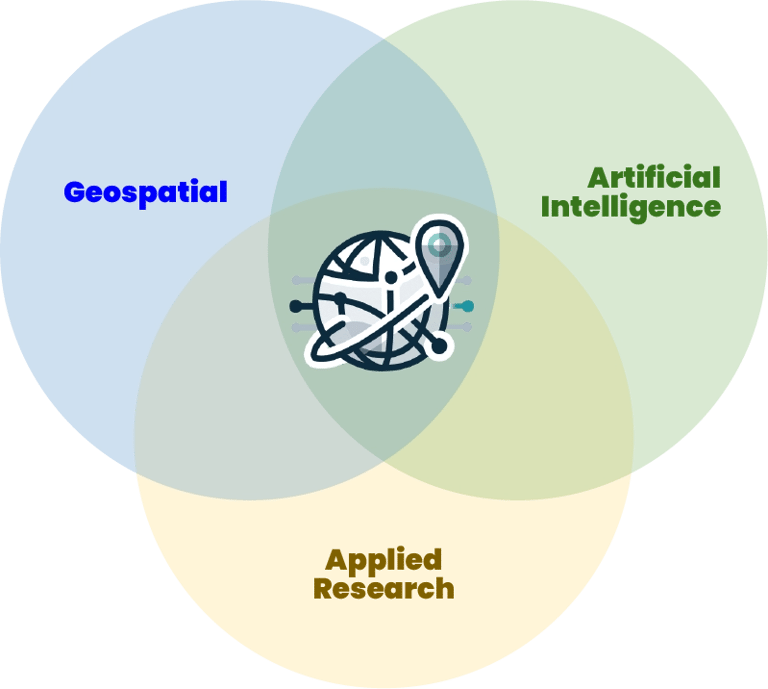

Contact me to partner!
If you're a decision-maker in government, international organizations, or a business managing labor-intensive workforces, especially in challenging climates. In that case, this is your opportunity to integrate AI for worker safety into your operations. With geospatial intelligence in factories and machine learning in workplace health, we can build systems that keep your workers safe while enhancing productivity.
I’m ready to partner with you to implement advanced machine learning extensions and environmental data integration for worker safety into your business. Whether you aim to predict worker fatigue, detect unsafe conditions, or integrate external data to optimize working conditions, I can help you design and implement solutions tailored to your needs.
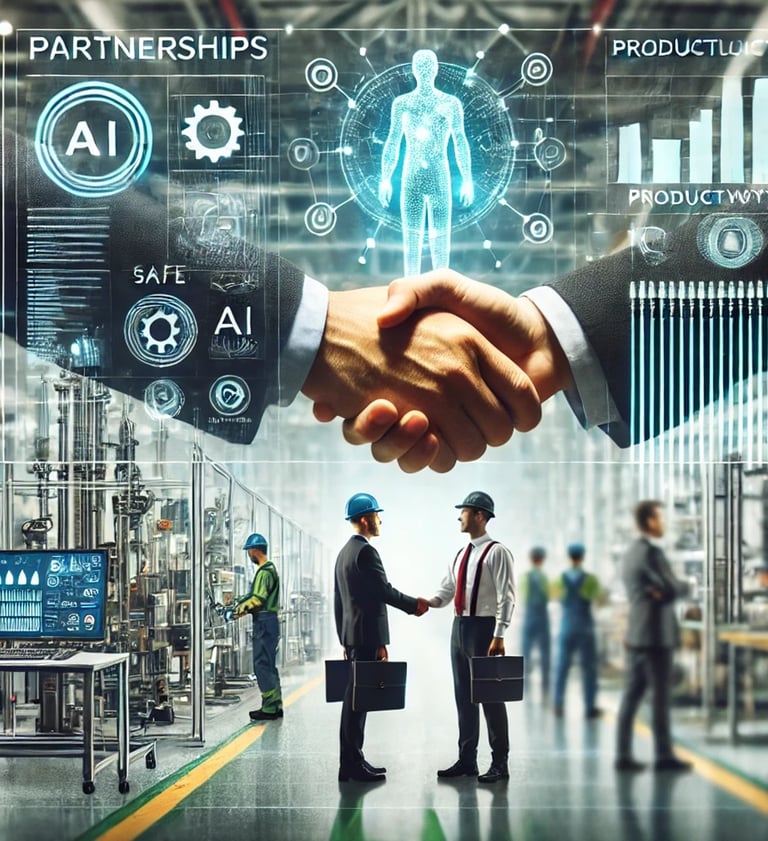

Check out the full video to learn how AI and geospatial intelligence can make workers safer.

